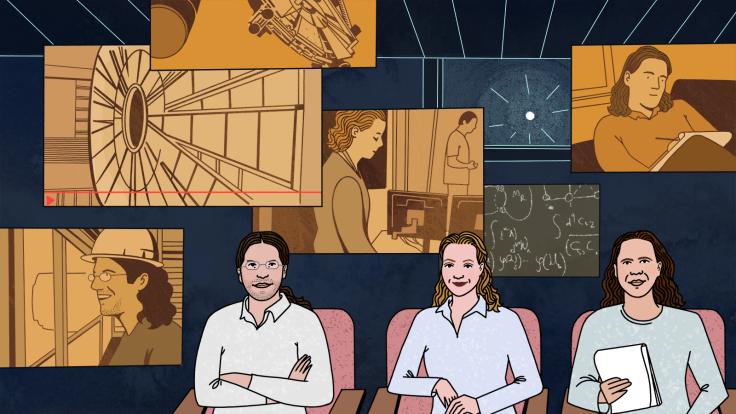Professor Prairie
Particles and prairie. For many people, these words are synonymous with Fermilab.
In the 1970s, when founding director Robert Wilson led the construction of the Tevatron particle accelerator, Robert Betz launched in the center of its four-mile ring one of the earliest and most ambitious prairie reconstruction projects in the state of Illinois.
Betz, who died on April 5, was a professor of biochemistry at Northeastern Illinois University. He was one of the first people to recognize the importance of saving the native prairie ecosystem. Known as "Professor Prairie," he traveled across the Midwest to identify and catalog "cemetery prairies," the last remnants of original prairie that grew on pioneer cemeteries and escaped development. At Fermilab, he used his knowledge and worked with grounds crews and volunteers to turn farmland back into the original tallgrass prairie.
"There is a chain of people who have inspired this region, for which I would list [Henry David] Thoreau, [John] Muir, Aldo Leopold, May Watts, and then Dr. Betz," said Stephen Packard, director of Audubon of the Chicago Region, speaking at the Betz memorial symposium in July. "It was visionary of Dr. Betz early in his life to look around and say, ‘There is still nature here that is important to save.'"
Early on, Betz recognized the importance of burns for the well-being of the prairie. With persistence and a big smile on his face, he set out to convince other scientists of the benefits of prairie burns. Today, burns are a standard tool to maintain prairies and to control invasive plants. While prairie plants with their long roots survive the fire, non-native plants succumb to the heat.
More than 30 years after the start of the Fermilab prairie reconstruction project, the lab is home to 1100 acres of prairie, about 270 species of birds and more than 50 species of butterflies, thanks to the vision of Professor Prairie.
Kurt Riesselmann
Click here to download the pdf version of this article.






